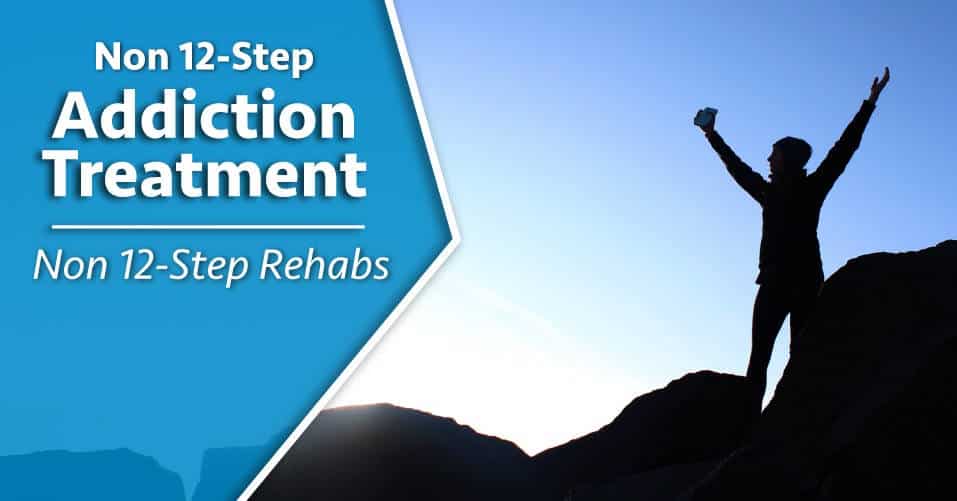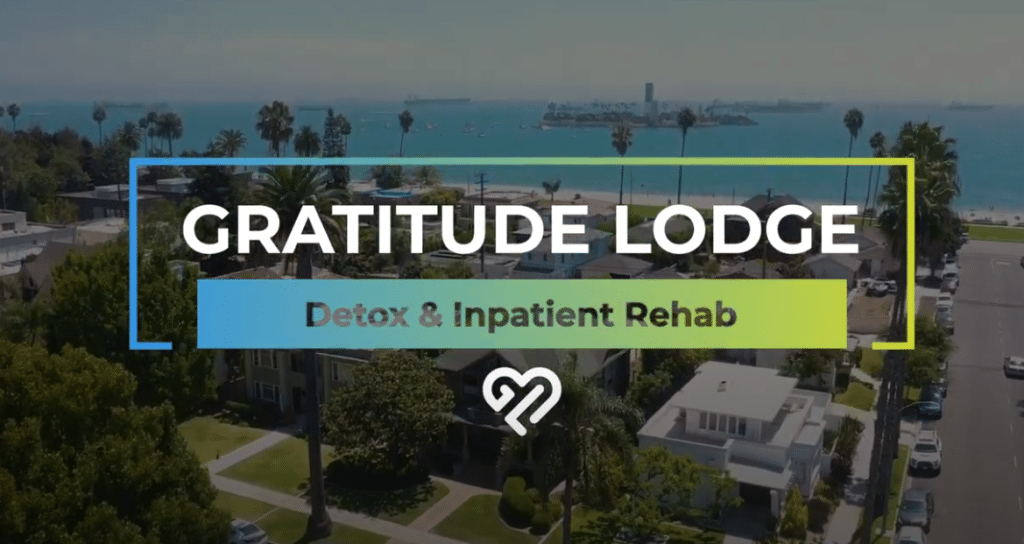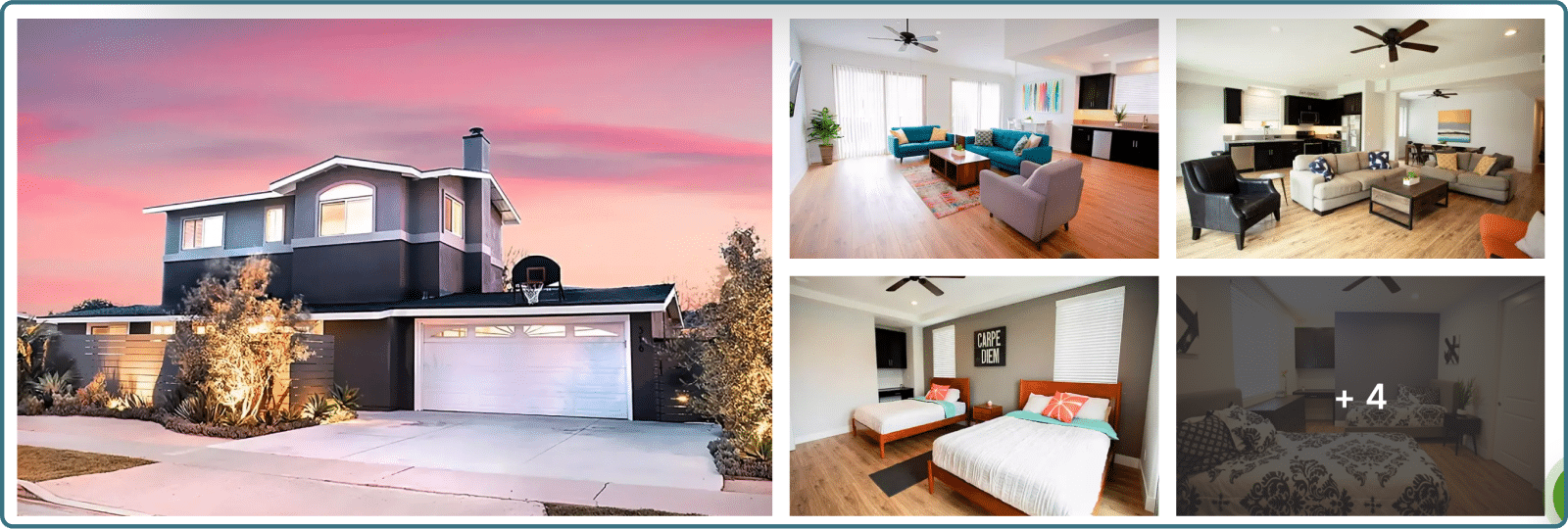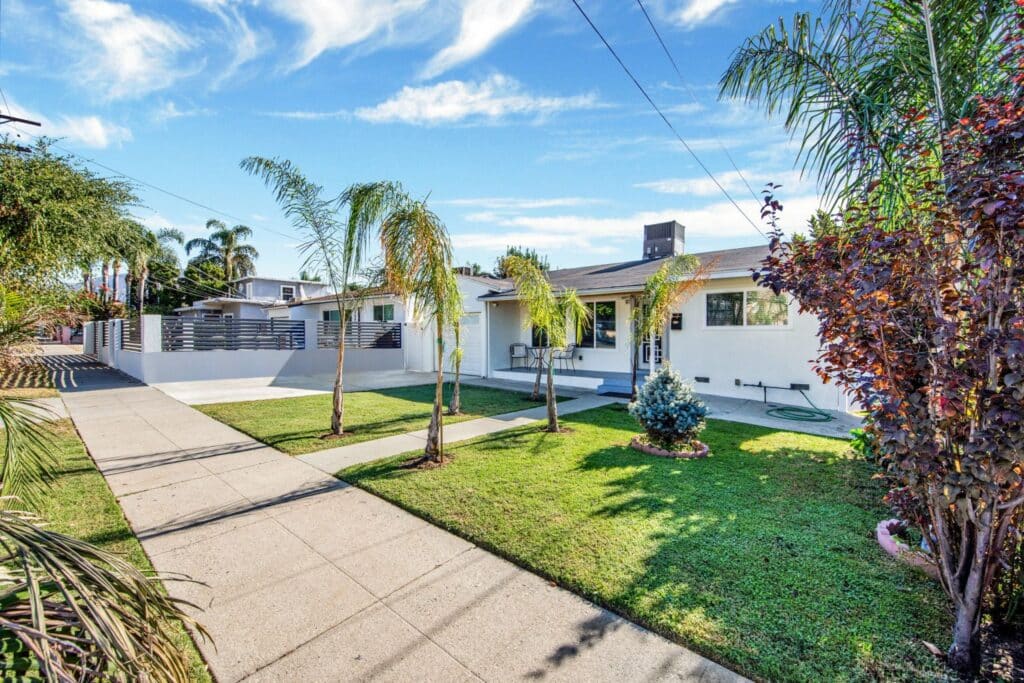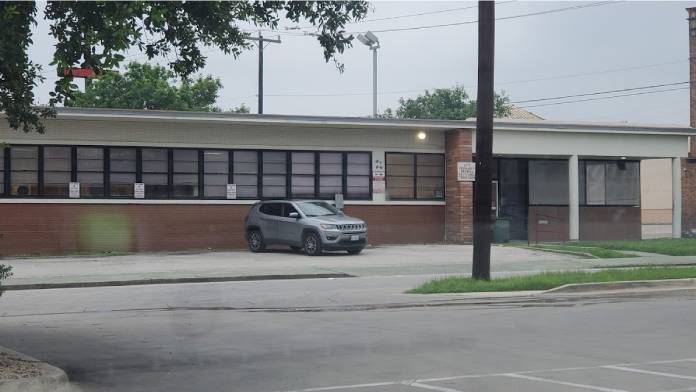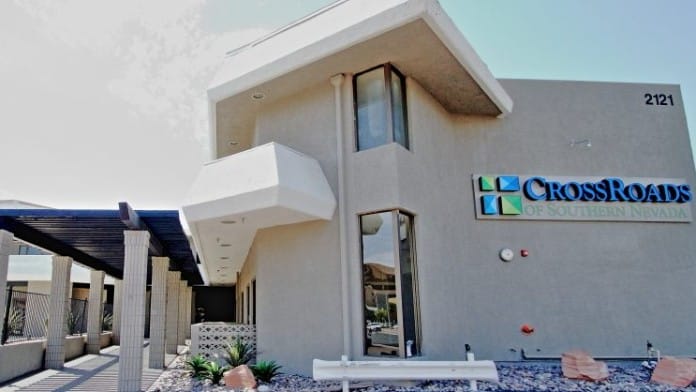
Understanding Your Options for Drug Rehab in Los Angeles
Drug rehab Los Angeles provides a wide range of programs to help people overcome addiction. If you or a loved one is struggling in the Los Angeles area, understanding your options is the first step. LA County has 325 rehab centers offering various levels of care, from medical detox and inpatient stays to flexible outpatient programs. These centers treat addiction to alcohol, opioids, meth, cocaine, and more.
Costs vary from state-funded programs to luxury facilities, and most centers accept private insurance. You can also find specialized programs for dual diagnosis, trauma, LGBTQ+ individuals, and veterans. Key accreditations to look for include Joint Commission, CARF, and California DHCS licensing.
With approximately 725,000 individuals in LA County needing treatment, the demand is high, but effective help is available. This guide will help you steer the options, from recognizing the need for treatment to finding the right program.
At Addiction Helpline America, we help individuals and families steer the complex landscape of drug rehab in Los Angeles. Our specialists can connect you with the right resources to start your recovery journey.

Quick look at Drug rehab Los Angeles:
Recognizing the Need for Treatment: Common Signs of Addiction
Recognizing the need for treatment is often the hardest step. Addiction develops slowly, but if you’re worried about yourself or a loved one, it’s time to pay attention. Here are common signs that it’s time to explore drug rehab Los Angeles options:
- Behavioral Changes: Increased secrecy, lying, defensiveness about substance use, loss of interest in hobbies, and risky behaviors like driving under the influence.
- Physical Symptoms: Sudden weight changes, poor hygiene, dilated or constricted pupils, track marks, constant fatigue, slurred speech, or a persistent cough. For alcohol addiction, look for intense cravings and withdrawal symptoms like shaking or sweating.
- Psychological Signs: Worsening anxiety or depression, unpredictable mood swings, irritability, paranoia, memory problems, and feelings of hopelessness or guilt.
- Social Withdrawal: Pulling away from friends and family, preferring to spend time alone or only with others who use substances.
- Financial Difficulties: Constantly borrowing money, unexplained credit card debt, selling personal belongings, or theft to fund their habit.
- Neglecting Responsibilities: Poor performance at work or school, missing appointments, and failing to care for home or family obligations.
- Increased Tolerance & Withdrawal: Needing more of a substance to get the same effect. Experiencing physical and psychological distress when trying to stop, such as nausea, sweating, tremors, severe anxiety, or seizures. Heroin addiction withdrawal can be particularly painful.
- Unsuccessful Attempts to Quit: A clear sign that professional help is needed is when someone genuinely wants to stop but cannot do so on their own.
If these signs are familiar, don’t wait. Addiction is a progressive disease, but recovery is possible. SAMHSA’s National Helpline offers free, confidential support, and Addiction Helpline America can connect you with a drug rehab Los Angeles program that fits your needs.
Understanding the Continuum of Care in Los Angeles
When looking into drug rehab Los Angeles, it’s important to understand the “continuum of care.” This means treatment isn’t a single event but a journey through different levels of support that adapt to your needs as you progress in recovery. A quality program will guide you from intensive support to greater independence.
This gradual step-down approach builds the skills and confidence needed for lasting sobriety.
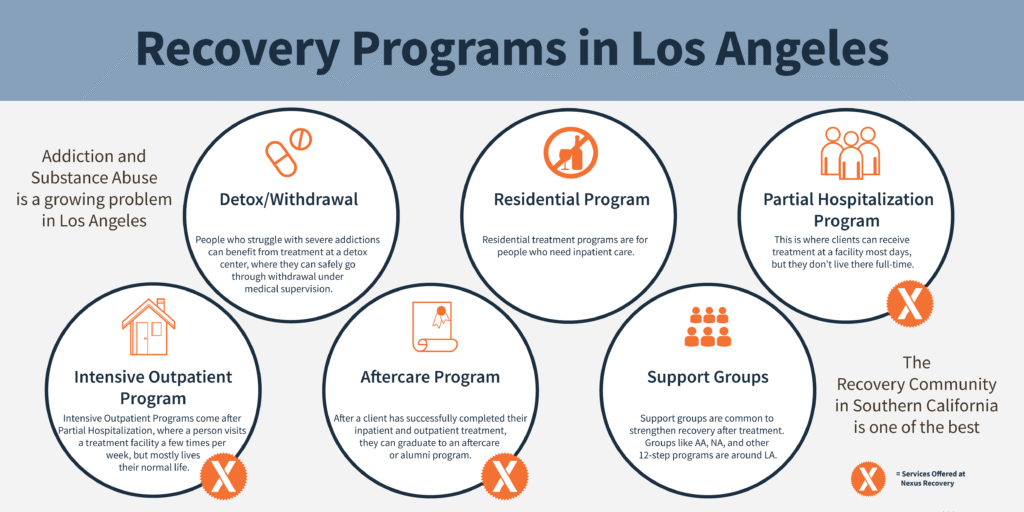
Medical Detox: The First Safe Step
For many, recovery starts with medical detox. Withdrawal from substances like alcohol or benzodiazepines can be dangerous, so professional support is crucial. In a detox program, you receive 24/7 medical supervision to manage withdrawal symptoms safely and comfortably. Healthcare professionals use medications to ease cravings, anxiety, and physical discomfort. Detox typically lasts 3 to 10 days and is the preparation for therapy, not the treatment itself. Once you are medically stable, you can begin addressing the root causes of addiction.
Inpatient and Residential Programs
After detox, many enter inpatient or residential treatment, where you live at the facility in a structured, trigger-free environment. The daily schedule includes individual and group therapy to explore the drivers of addiction. Many drug rehab Los Angeles centers also offer holistic activities like yoga, meditation, and art therapy to teach healthy coping skills. These programs, typically lasting 28, 60, or 90 days, are ideal for those with severe addiction or co-occurring mental health conditions. Longer stays are consistently linked to better long-term outcomes.
Outpatient Programs: Flexibility in Recovery
Outpatient programs offer flexibility, allowing you to live at home and maintain daily responsibilities while attending treatment. This is a great option if you have strong home support or are stepping down from residential care.
- Partial Hospitalization Programs (PHP): The most intensive option, with treatment for several hours a day, five or more days a week.
- Intensive Outpatient Programs (IOP): Typically involve 9-12 hours of therapy per week, often scheduled around work or school.
- Standard Outpatient: The least intensive, with one or two therapy sessions per week.
Outpatient care is generally more affordable than inpatient treatment because it doesn’t include housing costs.
The Critical Role of Aftercare and Sober Living
Completing a program is the beginning, not the end, of recovery. The period after primary treatment is when you are most vulnerable to relapse. Aftercare provides ongoing support to steer this transition.
Effective aftercare includes relapse prevention planning, continued therapy, and connection to a sober community. Peer-led groups like Alcoholics Anonymous (AA) and Narcotics Anonymous (NA) offer free, accessible support throughout Los Angeles. Alternatives like SMART Recovery are also available.
Sober living homes provide a structured, substance-free environment where you can live with others in recovery. These homes offer peer support and accountability as you practice independent living. Building a sober community is key to long-term success. Addiction Helpline America can help you find programs in Los Angeles with strong aftercare support.
How to Choose the Right Drug Rehab in Los Angeles
Finding the right drug rehab Los Angeles center is a critical decision. With 325 centers in the county, the key is to find a program that fits your unique needs.
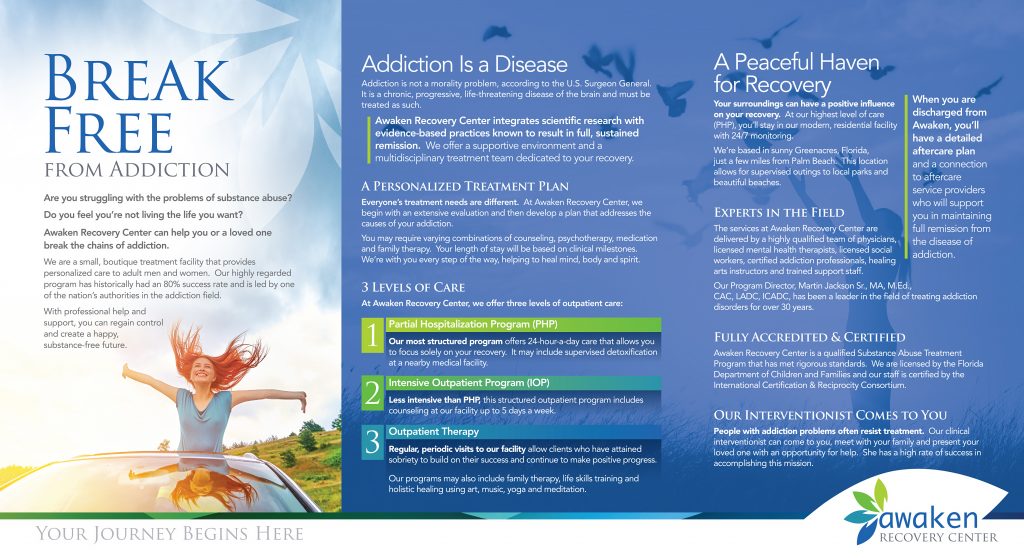
Consider your personalized needs, the location (close to home vs. a fresh start), staff credentials (look for licensed professionals), and the treatment modalities offered. Program length is also a factor, with options ranging from short-term detox to 90-day residential stays and longer outpatient care.
| Feature | Inpatient/Residential Treatment | Outpatient Treatment (IOP/PHP) |
|---|---|---|
| Environment | 24/7 structured, immersive, substance-free living | Live at home, attend sessions during the day/evening |
| Supervision | Constant medical and therapeutic supervision | Scheduled sessions, less direct supervision |
| Intensity | High intensity, focused on recovery without distractions | Moderate to high intensity, allows for daily responsibilities |
| Ideal For | Severe addiction, co-occurring disorders, history of relapse | Mild to moderate addiction, strong support system, work/school |
| Cost | Generally higher due to accommodation and round-the-clock care | Generally lower, as no overnight stay is required |
| Flexibility | Limited flexibility, full commitment to the program | High flexibility, allows for maintaining daily life |
| Therapies | Extensive individual, group, and holistic therapies | Regular individual, group, and educational sessions |
Verifying Accreditation and Licensing
Before committing to a program, verify its credentials. Accreditation from organizations like The Joint Commission or CARF International is a voluntary seal of approval indicating high standards of care. More importantly, ensure the facility has state licensure from the Department of Health Care Services (DHCS), which is required by law in California. These credentials ensure the facility is safe, staffed by qualified professionals, and uses proven treatment methods.
Assessing Treatment Philosophies and Therapies
Effective treatment is built on evidence-based practices—therapies proven by scientific research.
- Cognitive Behavioral Therapy (CBT) helps you identify and change negative thought patterns that fuel addiction.
- Dialectical Behavior Therapy (DBT) teaches skills in mindfulness, distress tolerance, and emotion regulation, which is especially helpful for co-occurring disorders.
Many Los Angeles rehabs also use holistic approaches (yoga, meditation, nutrition) and experiential therapies (art, equine, or adventure therapy) to treat the whole person. Some centers use specialized, structured protocols for specific addictions, like those for stimulants. The goal is to find an approach that resonates with you.
The Unique Benefits of Seeking Treatment in Los Angeles
Los Angeles is a hub for innovative addiction care, offering unique advantages:
- Diverse Treatment Options: With hundreds of rehabs, you can find specialized programs for any need, including gender-specific, LGBTQ+ affirming, and luxury options.
- Leader in Holistic Care: The city’s wellness culture means many centers integrate cutting-edge holistic and alternative therapies.
- Inspiring Environment: The natural beauty of Southern California, from beaches to mountains, provides a healing backdrop for recovery.
- Large Recovery Community: LA has a vast and active network of support groups like AA and NA, ensuring you can always find a meeting.
- Access to Specialized Professionals: As a major city, Los Angeles attracts top-tier doctors, psychiatrists, and therapists specializing in addiction.
At Addiction Helpline America, we understand the local recovery landscape. Learn more about Los Angeles rehab options with Addiction Helpline America and let us help you find the right program.
Specialized Drug Rehab Los Angeles Programs
One-size-fits-all treatment is outdated. Many drug rehab Los Angeles centers offer specialized programs that address the root causes of addiction, such as trauma or mental health struggles. This integrated approach leads to better, more sustainable recovery outcomes.
Dual Diagnosis for Co-Occurring Disorders
50% of people with substance use disorders have a co-occurring mental health disorder, such as anxiety, depression, or PTSD. People often use substances to self-medicate these conditions, creating a vicious cycle. Dual diagnosis treatment addresses both addiction and mental health simultaneously through integrated care. This is far more effective than treating each issue separately. Support groups like Dual Recovery Anonymous (DRA) are also available for those navigating both challenges.
Trauma-Informed Care
For many, substance use is a way to cope with past trauma. Trauma-informed care recognizes this link and focuses on creating a safe, empowering environment for healing. Instead of asking “What’s wrong with you?”, this approach asks “What happened to you?” The goal is to avoid re-traumatization while helping you process painful memories. Specialized therapies like EMDR (Eye Movement Desensitization and Reprocessing) and somatic experiencing are often used to release trauma stored in the mind and body.
Programs for Specific Populations
Feeling understood is crucial for recovery. That’s why many centers offer programs for specific communities:
- LGBTQ+ Affirming Care: Provides a welcoming, judgment-free space that addresses the unique stressors faced by queer and transgender individuals.
- Veterans Programs: Custom for military personnel, addressing service-related trauma like PTSD and the challenges of transitioning to civilian life.
- Gender-Specific Treatment: Offers separate programs for men and women, acknowledging different recovery needs and communication styles.
- Adolescent and Young Adult Programs: Designed to meet the developmental needs of younger people, often including family therapy and educational support.
Navigating Rehab Costs and Insurance Coverage
Financial concerns are valid but shouldn’t prevent you from seeking help. Think of drug rehab Los Angeles as an investment in your future. While there is an upfront cost, untreated addiction is far more expensive in the long run. Fortunately, there are many ways to pay for treatment.
Average Costs in the Los Angeles Area
The costs for rehab in California can vary widely based on the program type, duration, and amenities. While California is one of the more expensive states for treatment, options exist for every budget. On average, outpatient treatment is the most affordable, while medical detox and long-term inpatient care cost more. Luxury rehabs with private rooms and resort-like settings can range from $15,000 to $75,000 or more.
How to Find a Drug Rehab in Los Angeles That Takes Your Insurance
Most rehab centers in Los Angeles accept private insurance. The Mental Health Parity and Addiction Equity Act (MHPAEA) requires most health plans to cover substance use disorder treatment. To understand your coverage, call the number on your insurance card and ask about your benefits for in-network and out-of-network providers. Many LA facilities work with major carriers like BlueCross BlueShield, Aetna, Anthem, Cigna, and United Healthcare. Addiction Helpline America can help you verify your insurance benefits and find a facility that accepts your plan.
Other Payment Options: Medi-Cal, Sliding Scale, and Grants
If you lack private insurance, other options are available:
- Medi-Cal: California’s Medicaid program covers addiction treatment for eligible individuals at many state-funded and non-profit centers.
- Sliding-Scale Fees: Many facilities (876 in California) adjust their prices based on your income, making treatment more accessible.
- Grants and Financing: Some non-profit centers receive grants to provide care to those in need. Many facilities also partner with lenders to offer financing plans, allowing you to pay for treatment over time. Over 1,244 rehabs in California accept cash or self-pay.
How to Support a Loved One Through Recovery
Watching a loved one struggle with addiction is painful. When they enter drug rehab Los Angeles, your support can be a powerful force for good, but it’s important to know what helpful support looks like.

While you can offer encouragement, the decision to get help must be theirs. When you talk to them, approach the conversation with compassion, not judgment. Use “I” statements to express your concerns and offer to help them research options.
Setting clear boundaries is crucial. This isn’t punishment; it’s about protecting your well-being and creating a healthier dynamic. This may mean refusing to give them money or making excuses for their behavior. It’s important to distinguish between supporting and enabling. Enabling actions, like paying their bills or bailing them out of trouble, shield them from the consequences that might motivate change.
Participating in family therapy, often offered by rehab programs, can help heal relationships and improve communication. You also need support. Groups like Al-Anon and Nar-Anon are designed for families and friends of those with addiction. They provide a safe space to share experiences and learn coping strategies.
Most importantly, take care of yourself. You cannot be an effective source of support if you are emotionally drained. Attending your own therapy or support groups is essential. Your consistent, boundaried support gives your loved one the best chance at recovery.
Frequently Asked Questions about Drug Rehab in Los Angeles
We understand you likely have many questions when considering drug rehab Los Angeles. Here are answers to some of the most common inquiries we receive:
How long does a typical drug rehab program last?
The duration of rehab varies based on individual needs.
- Detox: Typically lasts 3 to 10 days.
- Inpatient/Residential: Programs usually run for 30, 60, or 90 days, with longer options available for severe cases.
- Outpatient (IOP/PHP): Can last from several weeks to six months or more, providing a gradual transition back to daily life.
The right program length is one that is customized to your progress and builds a strong foundation for recovery.
What happens after completing a rehab program?
Completing rehab is the first step in a lifelong journey. A quality drug rehab Los Angeles center will create an aftercare plan to support long-term sobriety. This often includes:
- Transition to Sober Living: Many people move to sober living homes for a structured, supportive environment.
- Continued Therapy: Ongoing individual, group, or family counseling strengthens coping skills.
- Support Group Participation: Active involvement in groups like AA, NA, or SMART Recovery provides crucial peer support.
- Relapse Prevention Planning: Developing a clear plan to identify and manage triggers is essential for maintaining sobriety.
Can I lose my job for attending rehab in California?
California has strong legal protections for employees seeking addiction treatment. The federal Family and Medical Leave Act (FMLA) and the California Family Rights Act (CFRA) allow eligible employees to take unpaid, job-protected leave for treatment. Employers with 25 or more employees must provide reasonable accommodation, which can include using paid or unpaid time off. Your medical information is confidential and protected by law. It’s wise to consult with your HR department to understand your specific rights.
Your Path to Recovery Starts Today
Taking the first step toward recovery is a brave decision. If you’re reading this, know that recovery is possible, and a fulfilling, sober life is within your reach.
Los Angeles is a hub for healing, with a vast array of treatment options, dedicated professionals, and a vibrant recovery community. This guide has walked you through the key aspects of drug rehab Los Angeles, from understanding the types of care to navigating costs and insurance.
But you don’t have to figure it all out alone. The process can feel overwhelming, and that’s why Addiction Helpline America is here. We provide free, confidential, and personalized guidance to connect you with the right program from our extensive network. We take the time to understand your unique situation and help you find a center that fits your needs, whether it’s for detox, inpatient, or outpatient care.
Your journey to recovery can start today with a simple, supportive conversation. Find the right California drug rehab program for you and begin building a healthier, happier future.
Recovery is waiting. We’ll be here to guide you.
Our helpline is 100%
free & confidential
If you or someone you care about is struggling with drug or alcohol addiction, we can help you explore your recovery options. Don’t face this challenge alone—seek support from us.
Programs
Resources
Will my insurance
cover addiction
treatment?
We're ready to help
Find the best
drug or alcohol treatment
center
Are you or a loved one struggling with addiction? Call today to speak to a treatment expert.

